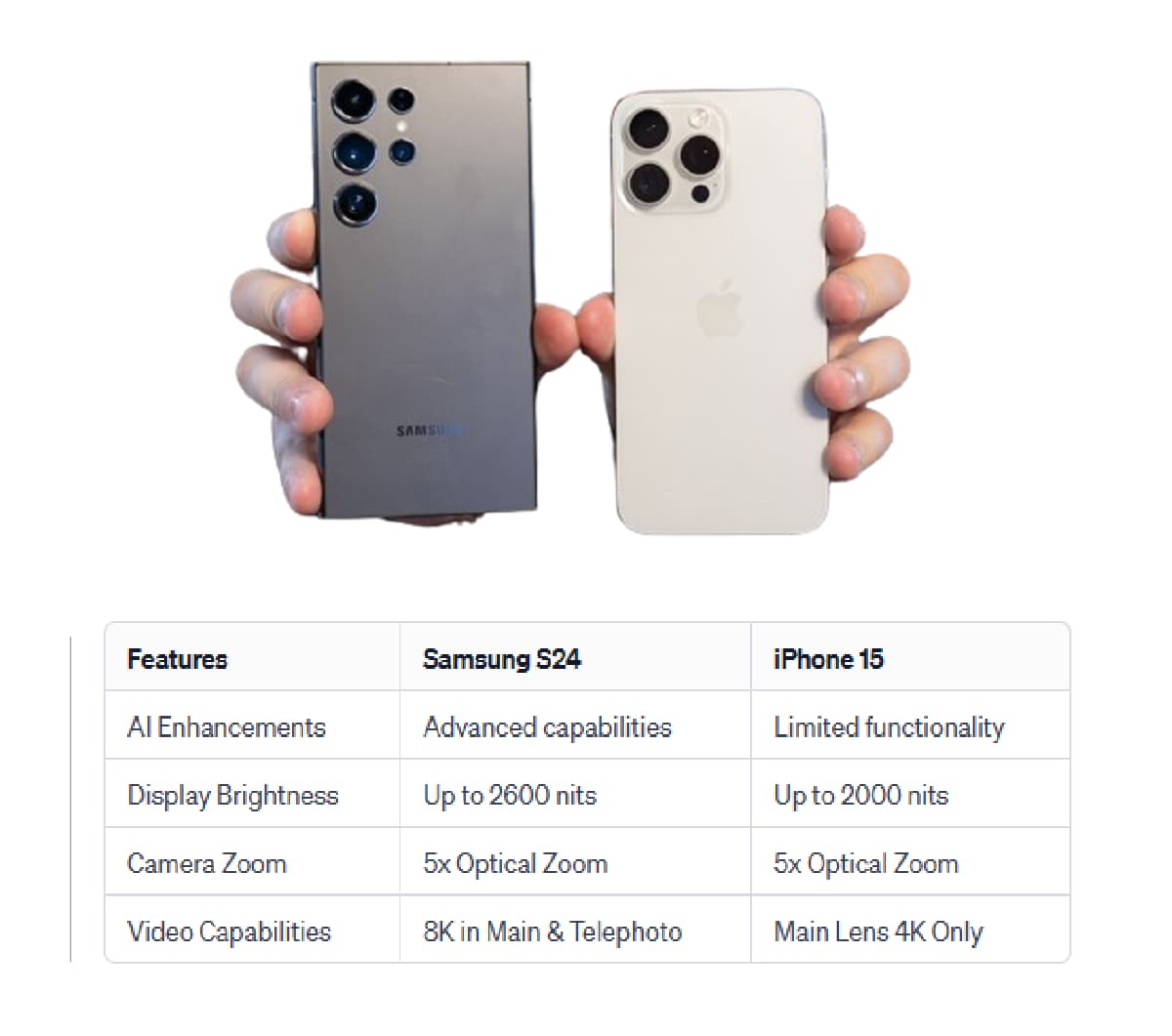
Smartphone design has come a long way since the days of bulky devices with physical keyboards. Today, design is more than just aesthetics—it’s about usability, durability, and how well a phone fits into your life. In this guide, we’ll explore how smartphone design has evolved, what’s crucial in 2024, and how to choose a phone with the best build quality and user interface. Let’s dive into what makes a smartphone not just look good, but work well for you.
The Evolution of Smartphone Design
From Brick Phones to Sleek Devices
Smartphones have transformed dramatically over the years. Here’s a quick look at their evolution:
- Early Days: Remember the brick-like phones of the early 2000s? They were bulky but sturdy.
- Touchscreens: The introduction of touchscreens revolutionized design, making phones slimmer and more interactive.
- Edge-to-Edge Displays: Recent designs focus on maximizing screen space with minimal bezels, making devices look more modern and immersive.
Why Design Matters Now More Than Ever
In 2024, design isn’t just about looks. It’s about how a phone feels in your hand, its durability, and how user-friendly it is.
- Ergonomics: Phones need to be comfortable to hold and use, which impacts everyday usability.
- Durability: With sleek designs, ensuring a phone can withstand drops and spills is crucial.
- Aesthetics: While not the only factor, a visually appealing phone can be a major selling point.
How Important Is Smartphone Design in 2024?
Design’s Role in Purchase Decisions
Design plays a significant role in smartphone sales. Here’s why:
- First Impressions: A phone’s look can be the first thing you notice. If it’s attractive, it’s more likely to catch your eye.
- User Experience: Good design improves usability. Features like button placement and screen responsiveness affect how easily you can use your phone.
- Brand Identity: For many brands, design is a way to stand out. Unique design elements can make a phone more memorable.
The Current Design Trends
Some popular design trends in 2024 include:
- Foldable Screens: Allow for larger displays in a compact form.
- Minimalist Aesthetics: Clean lines and simple shapes are popular.
- Sustainable Materials: Increasing use of recycled and eco-friendly materials.
Why Smartphone Design Has Plateaued
The Challenge of Innovation
While there have been many design advancements, some experts believe smartphone design has plateaued. Here’s why:
- Design Constraints: Most modern smartphones follow a similar design template due to hardware limitations.
- Market Saturation: With many devices offering similar features, significant design innovations are harder to come by.
What’s Next for Smartphone Design?
Even if design seems stagnant, the future holds exciting possibilities:
- Advanced Materials: Expect phones to use more innovative materials for better durability and aesthetics.
- New Form Factors: Innovations like rollable screens might bring fresh design concepts.
Smartphones with the Best Build Quality
Why Build Quality Matters
Build quality impacts a phone’s durability and longevity. A well-built phone can withstand daily wear and tear better than a poorly constructed one.
- Materials: Phones with metal or high-quality plastic frames tend to be more durable.
- Construction: Attention to detail in assembly, such as tight-fitting panels and robust hinges, improves build quality.
Top Durable Smartphones for 2024
If durability is a priority, consider these options:
- Samsung Galaxy S24 Ultra: Known for its premium materials and robust build.
- iPhone 15 Pro Max: Features high-quality construction and excellent durability.
- Google Pixel 8 Pro: Offers a solid build with a sleek design.
How to Choose a Durable Smartphone
Key Factors to Consider
When looking for a durable smartphone, keep these aspects in mind:
- Build Material: Metal and high-grade plastic generally offer better durability than cheaper materials.
- Water and Dust Resistance: Look for phones with an IP rating for added protection.
- Case Compatibility: Ensure the phone is compatible with protective cases for extra security.
Testing Durability
Check reviews and durability tests to see how a phone holds up under stress. You might also want to consider devices that have passed rigorous military standards for durability.
The Impact of Design on Smartphone Usability
How Design Affects Everyday Use
Design affects how easily you can use your phone. Here’s how:
- Button Placement: Well-placed buttons are easier to reach and use.
- Screen Size and Display: A good screen size and quality improve your overall experience, from watching videos to reading texts.
- Weight and Thickness: A phone that’s too heavy or too thin can be uncomfortable to use for extended periods.
The Importance of Ergonomics
Ergonomics is crucial in smartphone design. Phones should be comfortable to hold and easy to use with one hand. Look for devices with curved edges or textured grips for better handling.
Smartphones with the Best User Interface
What Makes a Great UI?
The user interface (UI) is how you interact with your phone’s software. A great UI should be:
- Intuitive: Easy to navigate without a steep learning curve.
- Responsive: Quick to react to your commands and inputs.
- Customizable: Allows you to adjust settings and layout to your preference.
Top UIs for 2024
Here’s a look at some of the best UIs:
- iOS (Apple): Known for its smooth performance and ease of use.
- One UI (Samsung): Offers a user-friendly experience with extensive customization options.
- Stock Android (Google): Provides a clean and straightforward interface with timely updates.
Comparing Android Skins: Which Is Best?
Popular Android Skins
Android skins are custom user interfaces built on top of the Android operating system. Here are some popular ones:
- One UI (Samsung): Known for its features like Edge Panels and customization options.
- MIUI (Xiaomi): Offers a range of customization and features but can be heavy on resources.
- ColorOS (Oppo): Focuses on aesthetics and functionality with features like split-screen multitasking.
Choosing the Right Android Skin
Consider your preferences for design and features. For example, if you like a lot of customization, MIUI might be for you. If you prefer a clean, minimalistic approach, Stock Android or One UI could be better choices.
The Evolution of Android User Interfaces
How Android UIs Have Changed
Android UIs have evolved significantly:
- Early Versions: Initial versions were basic and less customizable.
- Material Design: Introduced in Android 5.0 Lollipop, focusing on a clean, modern look with better performance.
- Current Trends: Modern UIs offer more personalization, better performance, and enhanced accessibility features.
What to Expect in the Future
The future of Android UIs might include:
- More AI Integration: For smarter, more intuitive interfaces.
- Enhanced Customization: Greater ability to personalize and adjust the interface to your liking.
- Better Performance: Continued improvements to make UIs faster and more responsive.
In summary, smartphone design in 2024 is about balancing aesthetics, usability, and durability. While design trends might evolve slowly, focusing on build quality, ergonomics, and a user-friendly interface can help you find the best phone for your needs. Whether you’re choosing based on looks or functionality, understanding these aspects will lead you to a device that fits perfectly into your daily life.








